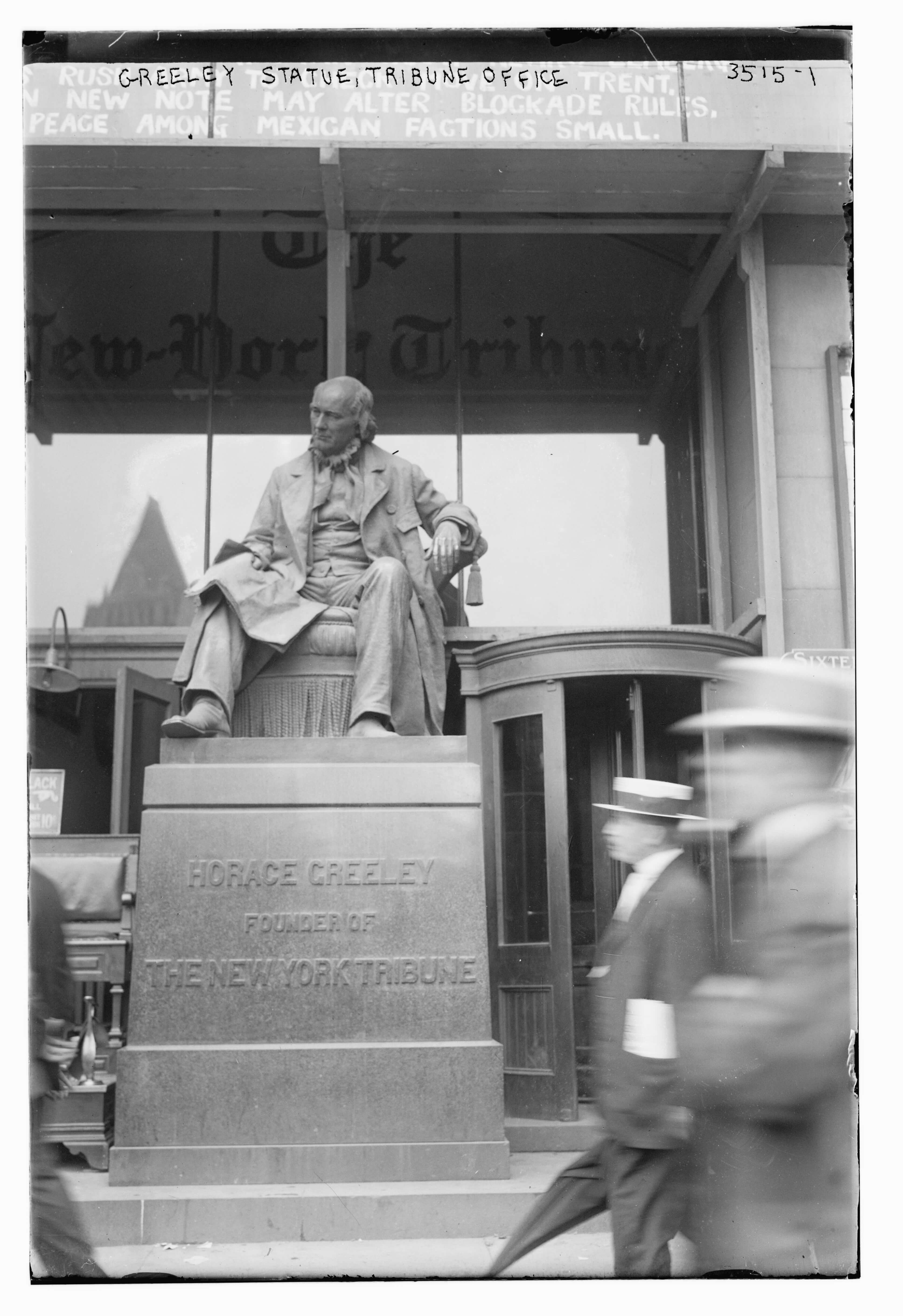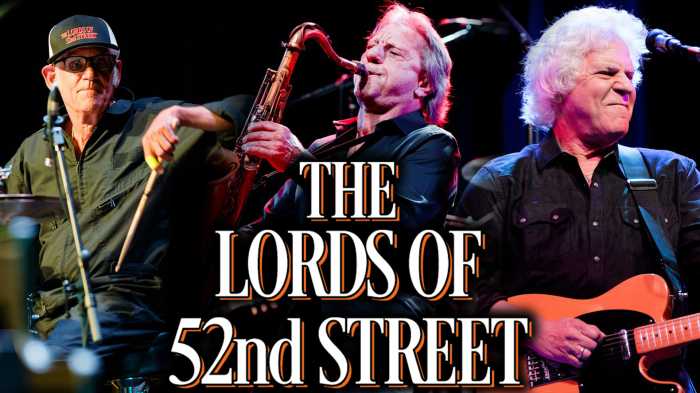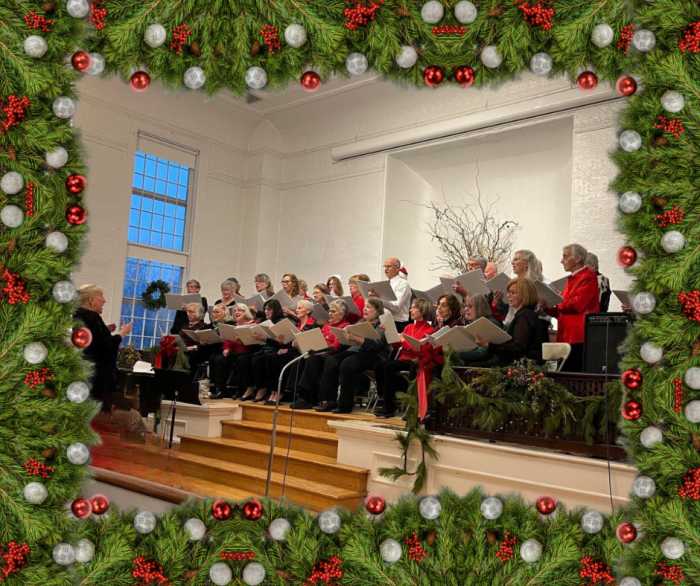NYC HISTORY: Horace Greeley’s Statues: A Vanguard to New York City Growth

“Horace Greeley has been an editor, lecturer, and politician. He has been sometimes in the right or wrong; he has been one of the foremost figures in the contest. This was by no means due entirely to his great intellect or intense energy but from the originality of his character.”
This description of Greeley came from his New York Times obituary on November 30, 1872, which summed up the individual and the notable media empire he built that became the voice of New York City for a century. In a testament to his character, Greeley has the distinction of having not one but two statues memorializing him in two of the most bustling neighborhoods in Manhattan, overseeing a constantly evolving city he helped define.
Like many successful New Yorkers’ stories, Greeley came from modest means. He first fell in love with politics and news while working as an apprentice printer for a local Whig party paper in Vermont. Attempting to seek his fortune and look for a new beginning, Greeley borrowed $1000 from his friend Jason Coggleshall and moved to New York City.
Using all his borrowed funds, Greeley leased a building on 30 Ann Street, Manhattan, and started his media vision. The “New Morning Journal of Politics, Literature, and General Intelligence,” released April 1841, was his first paper but had sluggish sales. Quickly learning from the slow reception, Greeley stripped the paper down to only daily news and renamed it to the New York Tribune at the price of one cent.
Wanting to expand the paper’s literary section, Greeley hired Margaret Fuller to attract writers from the Transcendentalist Movement as contributors in 1844. Cutting-edge reporting and getting behind the eight-ball on New York City culture, the Tribune reached a circulation of 200,000, setting the standard as the city’s most prominent media outlet.
With the rapidly growing media influence, Greeley would dive into politics and replace New York 6th District Congressman David Jackson in a special election. Congressman Jackson’s removal was due to fraud charges, first made public by the Tribune. In the one-year term of 1848-1849, Greeley introduced the Homestead Act, but this was dwarfed by his less successful bill that attempted to ban alcohol in the Navy.
Regardless of his successes and failures, his paper became a priority for endorsements of aspiring political candidates. Greeley would use this influence to focus on the country’s biggest visible sin, slavery.

Using his paper as a megaphone, Greeley cemented his legacy on the right side of history through his scathing editorial “A Prayer for Twenty Million,” August 19, 1862. In an open letter to President Lincoln and an attack on proslavery concessions for border states, Greeley stated:
“Rebellion, if crushed out tomorrow, would be renewed within a year if slavery were left in full vigor- that Army officers who remain to this day devoted to slavery can at best but half-way loyal to the Union- and that every hour of deference to slavery is an hour of added and deepened peril to the Union.”
After the Civil War, fueled by the slow process of Reconstruction, Greeley threw his hat in the political arena again, this time in a run for president. His whole campaign would center on the vague pledge of reconciliation of the former Confederacy and an end to the Union occupation. During the final days of the 1872 campaign, Greeley’s wife died, and his death soon followed.
The Tribune would be honored by John Quincy Adams Ward, who designed and constructed the first Greeley statue in 1890. This statue was dedicated and erected in front of the New York Tribune building across from City Hall Park (later moved to City Hall Park in 1915).
In 1892, a separate honor from the Typographical Union was constructed on 33rd and Sixth Avenue, which almost copied the first Greeley statue of him in a chair, looking down on the surrounding streets. Despite their different locations and similar styles, the memorials to Greeley project the same goal of him witnessing the city’s vitality and growth commercially and politically within perpetuity.









